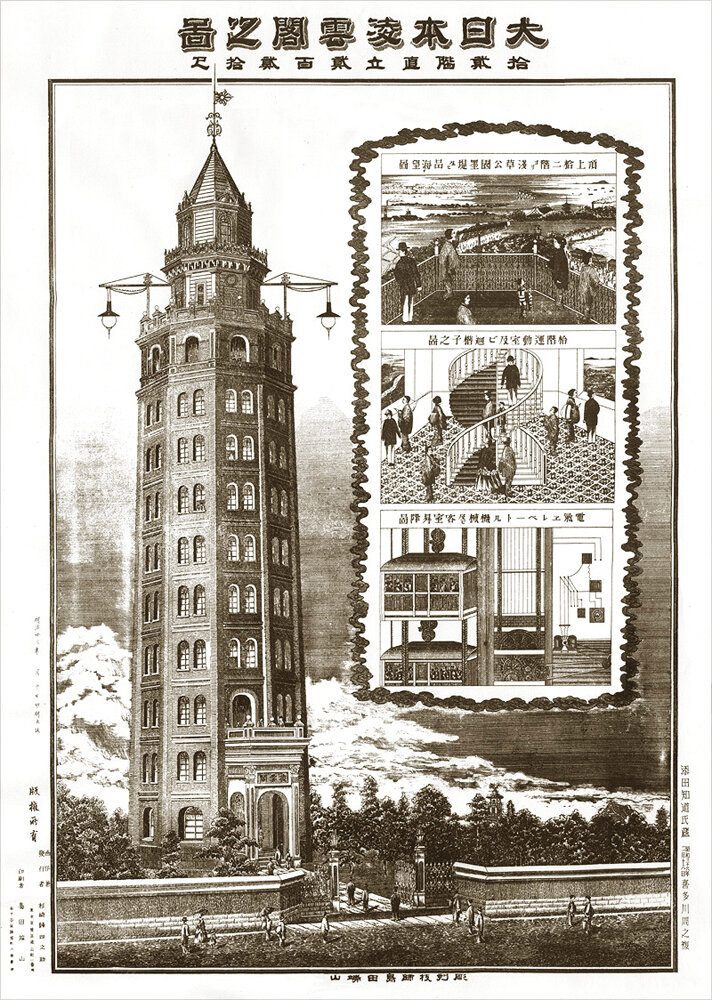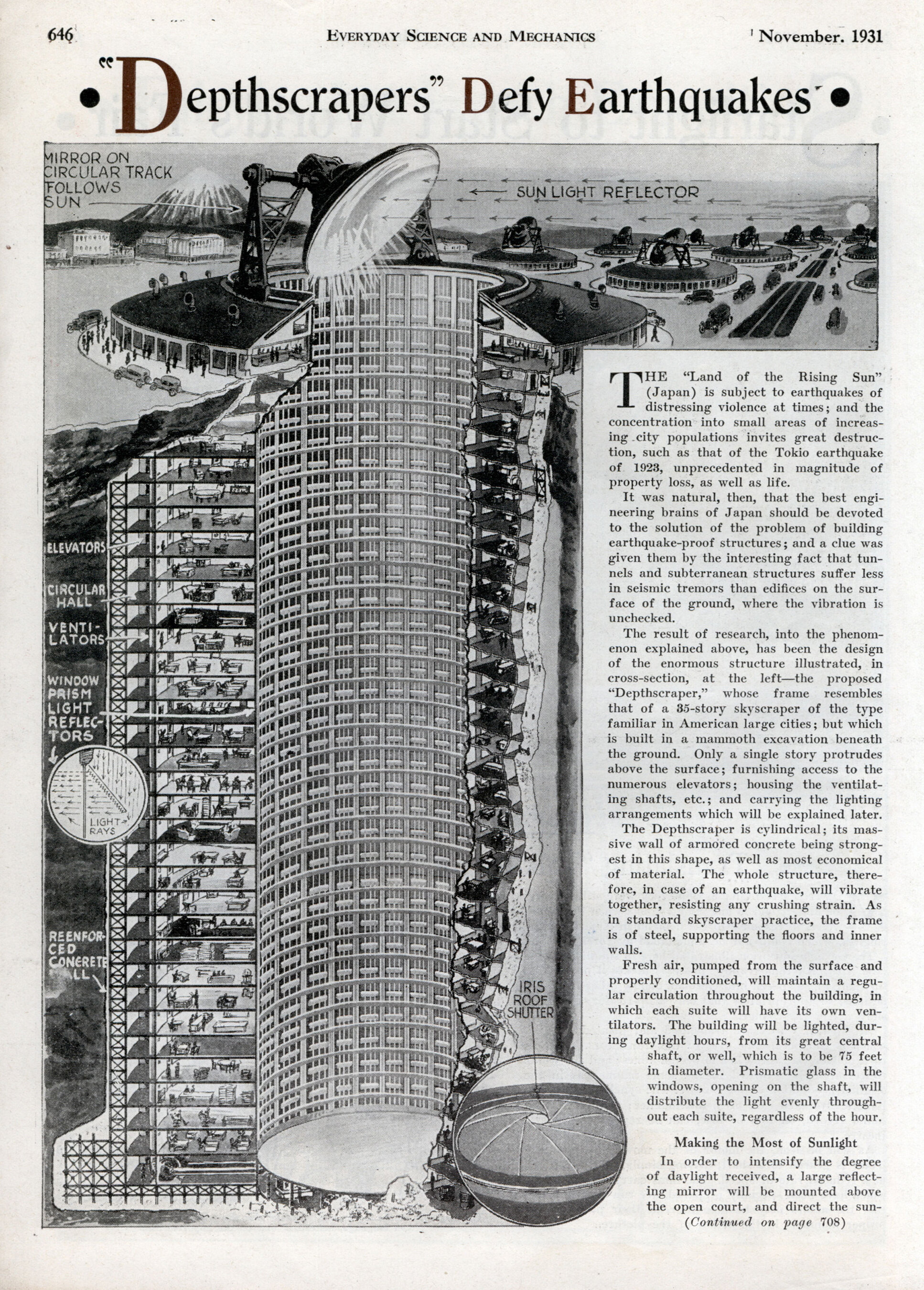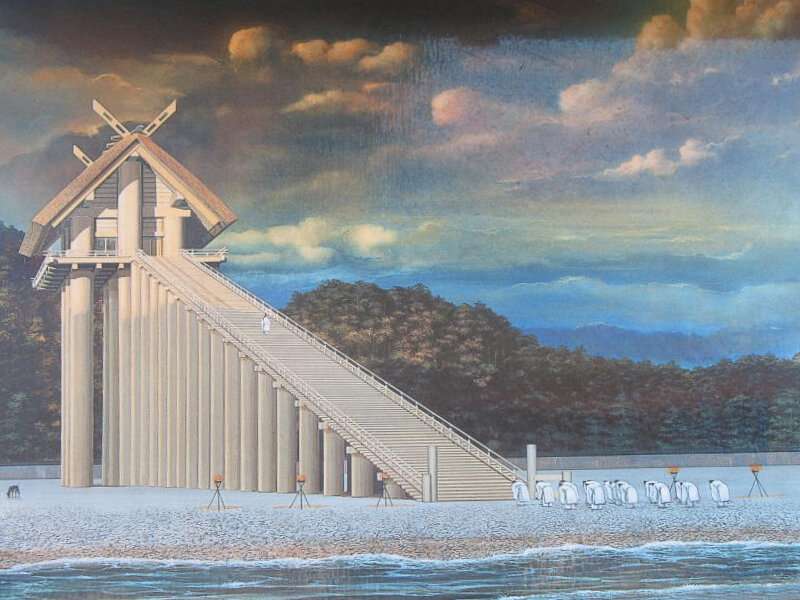Welcome to On Verticality. This blog explores the innate human need to escape the surface of the earth, and our struggles to do so throughout history. If you’re new here, a good place to start is the Theory of Verticality section or the Introduction to Verticality. If you want to receive updates on what’s new with the blog, you can use the Subscribe page to sign up. Thanks for visiting!
Click to filter posts by the three main subjects for the blog : Architecture, Flight and Mountains.

Ryōunkaku Tower: Japan's First Skyscraper
This is Ryōunkaku, Japan’s first western-style skyscraper. Built in 1890 in the Asakusa district of Tokyo, Ryōunkaku resembles a lighthouse, with an octagonal plan and a slight taper, topped with two setbacks and a pointed roof. The name Ryōunkaku translates to Cloud-Surpassing Tower, which indicates the importance of Verticality for the building’s landmark status.

The Earthquake-proof Depthscraper
Take a look at this design for a subterranean tower from Everyday Science and Mechanics in 1931. The structure was designed by Japanese engineers in response to earthquake concerns, so the building claims to be ‘earthquake-proof’. Technical aspects aside, questions abound regarding the experience of living or working in such a structure.

The Izumo-taisha Shrine
The ancient Izumo-taisha Shrine in southern Japan, built sometime around the 10th century AD, has all the ingredients of Verticality in its built form. The structure pictured above no longer exists, and we don't know exactly how it looked, but some records claim that the ancient temple was raised as high as 48 meters above the ground.
